Delays
Today was another day figuring out how to manage the inevitable delays that come with field work in a place like the Arctic. We found ourselves navigating complex equipment, other unexpected delays, and just the challenge of trying to get all of the aspects of our work up and running.
Kelly has been valiantly spending the past few days trying to get the bathymetry (seafloor depth) equipment working properly. It’s a pretty complex system where a transducer sends a sound signal to bounce off the seafloor. Then based on the time it takes the signal to return, the depth of the seafloor at that point can be determined. At the same time, this all has to be connected to a GPSA Global Positioning System (GPS) is a satellite-based navigation system used to track the location or position of objects on the Earth’s surface. location and known elevation, which is done between two radio-controlled devices - one is fixed to the top of a building here in Ny Ålesund while the second is connected to the transducer. All of that information is sent to a handheld device which stores the data. Well, it’s been a huge challenge to get all of these devices to communicate with each other, and Kelly has been incredibly persistent! Knowing the seafloor depth is really vital to learning how the glacier is changing over time.
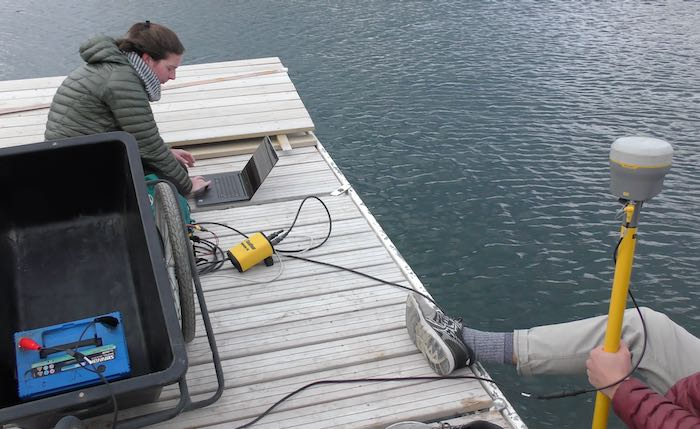
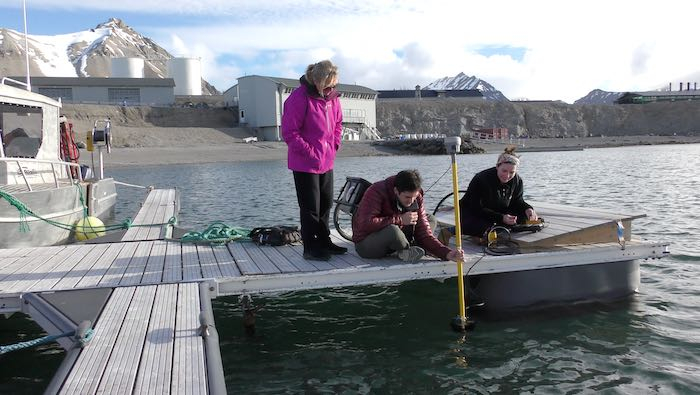
Xander has been working on getting the current velocity meter and the CTDA research tool that is submerged in the water to measure conductivity (salinity), temperature, and depth. instrument up and running. The CTDA research tool that is submerged in the water to measure conductivity (salinity), temperature, and depth., which stands for “Conductivity, Temperature and Depth” is designed to help us measure the salinity (from electrical conductivity) and temperature and various depths. This device is also equipped with a turbidity sensor which can measure how turbid, or cloudy, the water is. (This is valuable for knowing how much sediment is in the water.) While these devices are simpler to operate than the bathymetry system, they still require time to get set up properly and learn how to operate.
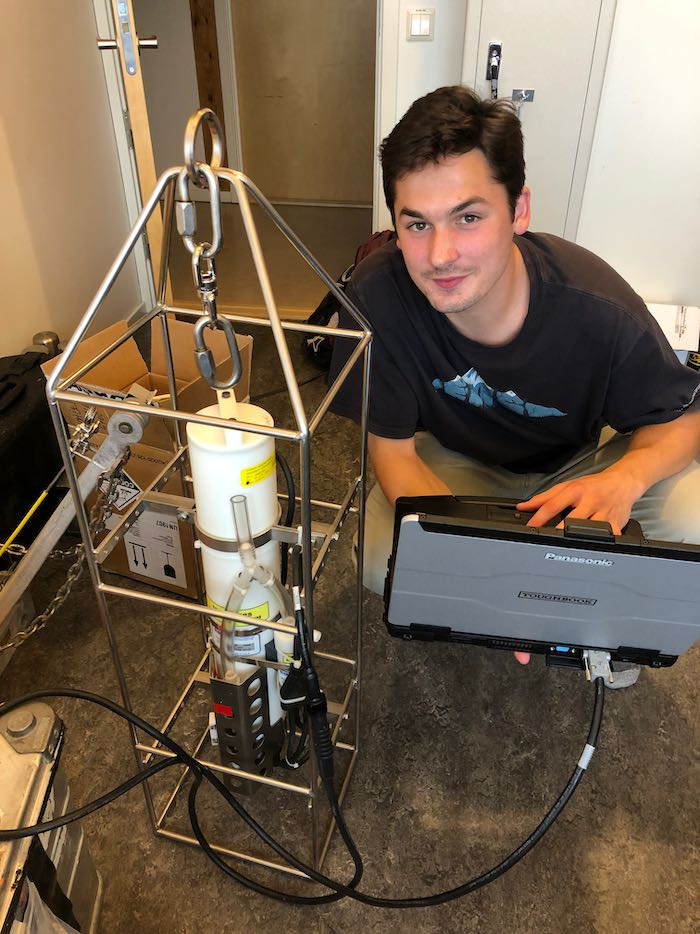
Julie is, of course, the chief scientist. In that role, she is spending her time coordinating, guiding us, and networking with others outside our group. She also has to interface with the wonderful logistics and scientific personnel here at Ny Ålesund - whose help we need to do the work. Julie has the ability to see the big picture of her research while also figuring out how to deal with all the minutia needed to get this project off the ground. I’m amazed at how well she navigates all of the hurdles the group has already faced, by maintaining her patience and good sense of humor. She is also a true collaborator, and has spent a lot of time talking with other scientists to find areas of collaboration.
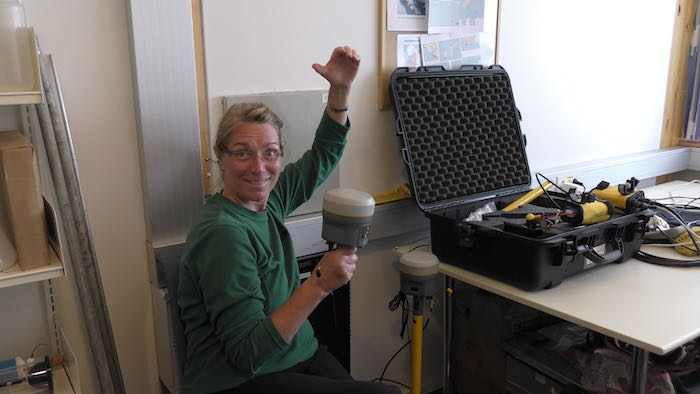
My main job will be flying the drone. Over the past couple of weeks I had to work on getting permission from various people to make sure I have the authorization to be able to fly. A big part of this is because Ny Ålesund is a “radio silent” area. There are several ongoing experiments which use radio frequency waves, so wifi, bluetooth and other radio frequency bands are generally not allowed within 20km of the research base. However, with special permission you are allowed, but even then you are restricted to certain times when experiments are not going on, and when the airport is not communicating with planes (which generally happens twice a week).
So I had to get permission from (a) the Norwegian Civil Aviation Authority, (b) NKOM, which is the equivalent of the Federal Communications Commission, (c) the Governor of Svalbard, (d) the Norwegian Mapping Authority, and (e) the Ny Ålesund Airport. I was able to get all those permissions, so now I am able to fly the drones up here. A huge shout out to Vera at the Norwegian Polar Institute and Stian from the Airport for being so helpful in guiding me through this process!
There are other logistics to work out. We had to get our survival suits rented and we will get our boat tomorrow. We will need to get assistance mounting equipment to the boat (like the winch to lower and raise equipment into the water). And today we found out a new law requires us to get a gun license from the Norwegian government in order to rent rifles - apparently that law literally went into effect on July 1, while we were in quarantine! Anyway, we are trying to expedite this process. Hopefully we’ll have our gun licenses in hand within a day or so. The problem is that we can’t go anywhere outside of Ny Ålesund without a rifle (because of the risk of polar bears). Without rifles, we’d be stuck!
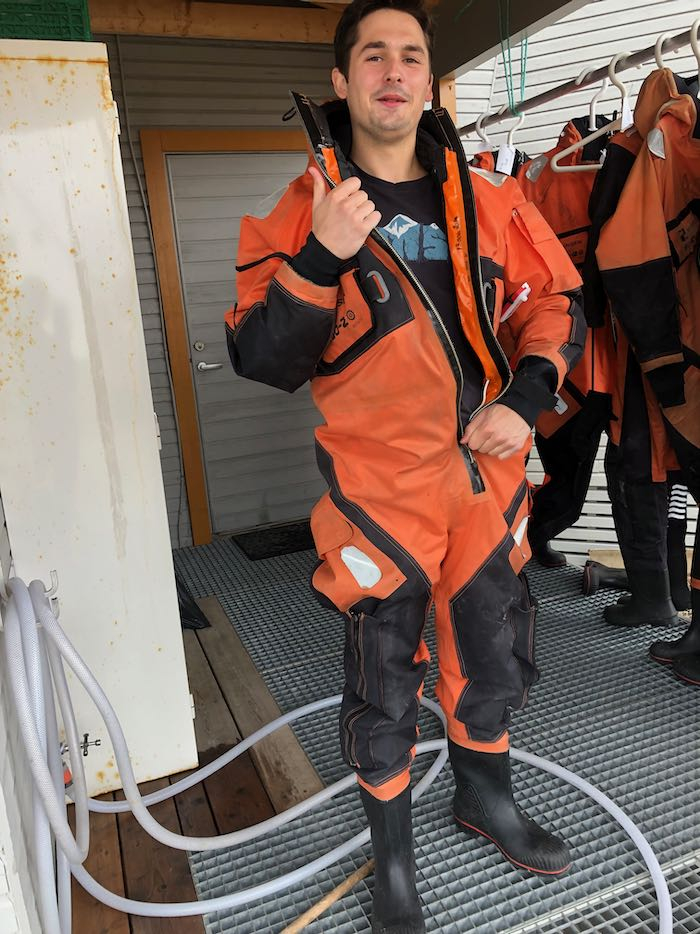

Opportunities
One of the wonderful things about being in a place like this are the amazing opportunities for collaboration between scientists. Everyone here is either a scientist or someone here to support scientists. The first question you ask (after “What’s your name?” and “Where are you from?”) is always, “What science project are you working on?”
There are people studying all sorts of things here - in addition to glaciers, there are scientists studying how kelp (seaweed) is changing as a result of warming oceans. There is a group of scientists studying bird populations and behavior. There is a group studying how to use satellite and drone images to help clean up plastic along Arctic beaches. There are ongoing projects using radio telescopes to make very precise maps of the Earth and to detect subtle changes in the Earth’s structure. And ongoing projects monitoring of the atmosphere. With over 100 people here right now, I'm sure I have missed many projects in this list; we just haven't been here long enough yet.
We’ve been talking with a large international group of scientists who are doing amazing work on the same glacier system we will be studying. They are monitoring all sorts of things about the glacier to detect how meltwater collects and flows through the glacier. Some of the equipment they are using include seismographs, CTDs, time-lapse and drone photographs, and these very cool sensors that will be put into meltwater pools on top of the glacier and (hopefully) flow out channels that develop. Since these sensors are GPSA Global Positioning System (GPS) is a satellite-based navigation system used to track the location or position of objects on the Earth’s surface.-enabled, hopefully the pathways of the meltwater channels can be mapped.
Some of our work overlaps or complements what they are doing, so there is not only an opportunity to share and expand on each others’ work, but on a practical level we might be able to join them out on the fjord. (Which will also be helpful if our gun permits don’t come through!)
Another group that might be interested in collaborating is the group studying kelp. We are monitoring the outflow of sediment from the glacier, and the flow of sediment into the fjord can have an effect on the ability of kelp to photosynthesize. I’m reminded of how interconnected all the parts of the environment are, to think that changes in a glacier can affect kelp miles away.
We also had one of the bird researchers offer to come with us since he already has his gun permit. So there is a really great sense of camaraderie here!
It’s so exciting for me to listen to all these different scientists talk about their work, and you really get a sense of how much more successful and interesting scientists’ work is when they have opportunities to collaborate with each other. I think of it like cross-pollination - the more that scientists can work together, the more we all learn and science will flourish!
Wildlife Sightings
While we spent most of our day inside, we did get two wonderful wildlife sightings. The first was a polar bear sighting, just outside of town. Here’s a video I took of a mother polar bear and her cub.
Then this evening we saw this great scene of an Arctic fox hunting Barnacle Geese, while it was being harassed by Arctic Terns!


Comments